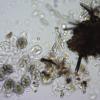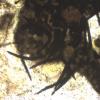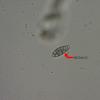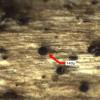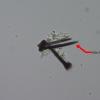
09-05-2023 06:06
 Marc Detollenaere
Marc Detollenaere
On Vaccinium myrtillus I found some brown setose f

07-05-2023 21:24
 Bernard CLESSE
Bernard CLESSE
Bonsoir à toutes et à tous,Apparemment, je ne tr

08-05-2023 17:25
 Marc Detollenaere
Marc Detollenaere
On dead twigs of Salix aurita I found some hairy d

05-05-2023 22:16
Dirk GerstnerHello all, This Mollisia gives me no peace.I had

06-05-2023 15:45
 Riet van Oosten
Riet van Oosten
Hello, found by Ruud van Middelkoop, April 2023, t

05-05-2023 13:14
 Laurent Bonneau
Laurent Bonneau
Bonjour, j'ai observé ce matin de petits asco s

03-05-2023 19:38
Ursula KozikBonjour et bonne journée, à la recherche d'une

05-05-2023 10:31
 Marc Detollenaere
Marc Detollenaere
Hello Forum,Yesterday I found some small white dis
Setose asco on Vaccinium
Marc Detollenaere,
09-05-2023 06:06
 On Vaccinium myrtillus I found some brown setose fruitbodies with muriform spores 16.5x5.5µ.
On Vaccinium myrtillus I found some brown setose fruitbodies with muriform spores 16.5x5.5µ.Could it be Pleostigma?
Any help would be appreciated.
Marc
Thomas Læssøe,
09-05-2023 13:39
Re : Setose asco on Vaccinium
Capronia could be a possibility
Wendy Untereiner,
09-05-2023 17:00
Re : Setose asco on Vaccinium
Dear Marc,
Yes, it cetainly looks like a Capronia. I'd like to culture this fungus if you're willing to send a portion of it to me.
Yours,
Wendy Untereiner
untereiner@brandonu.ca
Yes, it cetainly looks like a Capronia. I'd like to culture this fungus if you're willing to send a portion of it to me.
Yours,
Wendy Untereiner
untereiner@brandonu.ca
Marc Detollenaere,
10-05-2023 13:29

Re : Setose asco on Vaccinium
I tried to test hemiamyloidity but I didn't get a clear reaction.
Using a combination of keys of Capronia, C chlorospora was the only one with 5-7 transverse septae but the longitudinal septae in this taxon are located in the middle cells which is not the case here. Another possibility is C mansonii but here there are only 4-5 longitudinal septae and 1 incomplete longitudinal septum.
What do you think?Wendy, I will sent you the twig for further examination.
Marc
Using a combination of keys of Capronia, C chlorospora was the only one with 5-7 transverse septae but the longitudinal septae in this taxon are located in the middle cells which is not the case here. Another possibility is C mansonii but here there are only 4-5 longitudinal septae and 1 incomplete longitudinal septum.
What do you think?Wendy, I will sent you the twig for further examination.
Marc
